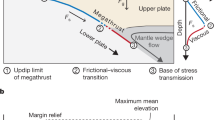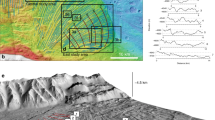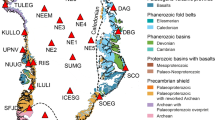Abstract
THE connexion of the distorted mountain strata with isostasy has been examined in NATURE of April 2, p. 603. The foundation of the argument was that the strata were originally deposited horizontally at the bottom of the sea. It is, however, necessary to go further back, for they must have been lifted to a great height before isostatic influences could begin to operate. There is here a problem of flow in a medium of extremely viscous type, namely, the outer region of the earth beneath, which can scarcely be avoided. If anywhere the horizontal drift beneath is from both sides towards the same centre the lighter material above it will be pushed up as is required, and in part also pushed down, but the resulting displacement need not at first be isostatically distributed. So also at ocean deeps the underlying drift away from the centre may carry along the more solid upper strata, thinning them out: anyhow a problem presents itself there. Moreover, in all internal motions the drift relative to the surface is necessarily tangential. The analogy of the sideway shrinking up of a flat roll of cloth has been employed.
This is a preview of subscription content, access via your institution
Access options
Subscribe to this journal
Receive 51 print issues and online access
$199.00 per year
only $3.90 per issue
Buy this article
- Purchase on Springer Link
- Instant access to full article PDF
Prices may be subject to local taxes which are calculated during checkout
Similar content being viewed by others
Author information
Authors and Affiliations
Rights and permissions
About this article
Cite this article
LARMOR, J. Distortion of Mountain Strata, Isostasy, and Glacial Periods. Nature 141, 906–907 (1938). https://doi.org/10.1038/141906b0
Issue Date:
DOI: https://doi.org/10.1038/141906b0
Comments
By submitting a comment you agree to abide by our Terms and Community Guidelines. If you find something abusive or that does not comply with our terms or guidelines please flag it as inappropriate.



